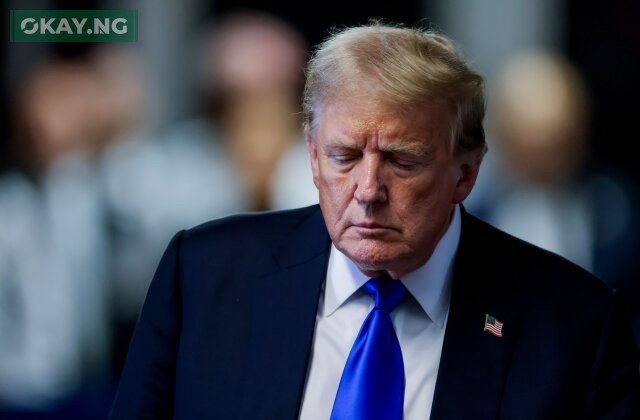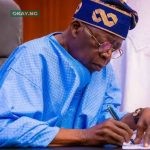In a dramatic policy shift, U.S. President Donald Trump announced a temporary rollback of newly imposed tariffs on numerous nations, triggering a significant market rebound. This reversal, however, coincided with a heightened trade standoff with China, as Trump escalated tariffs on Chinese imports. The abrupt change of direction followed a period of intense financial market volatility, raising questions about the administration’s trade strategy.
The announcement sent global stocks soaring, with the S&P 500 closing 9.5% higher. Bond yields eased, and the dollar strengthened. Asian markets followed suit, with Japan’s Nikkei index surging nearly 9%. This market response came after a tumultuous four-day period where the S&P 500 experienced a record $6 trillion loss in market value.
“I thought that people were jumping a little bit out of line, they were getting yippy, you know,” Trump told reporters, referencing the market’s reaction.
However, analysts caution that the recent market surge may not fully mitigate the economic damage already incurred. Surveys indicate a slowdown in business investment and household spending due to tariff-related uncertainties. A Reuters/Ipsos survey revealed that 75% of Americans anticipate price increases. Goldman Sachs, while reducing its recession probability from 65% to 45%, still projects a 15% increase in the overall tariff rate.
China Tensions Escalate:
Despite the tariff rollback on other nations, Trump increased tariffs on Chinese imports to 125% from 104%, further intensifying the trade dispute between the world’s two largest economies. Daniel Russel, vice president of international security and diplomacy at the Asia Society Policy Institute, stated, “China is unlikely to change its strategy: stand firm, absorb pressure, and let Trump overplay his hand. Beijing believes Trump sees concessions as a weakness, so giving ground only invites more pressure.”
Policy Uncertainty and Rationale:
The sudden policy reversal has fueled concerns about the predictability of Trump’s trade policies. Treasury Secretary Scott Bessent asserted that the move was a strategic maneuver to bring countries to the negotiating table, claiming, “This was his strategy all along. And you might even say that he goaded China into a bad position.”
Trump, however, acknowledged that market fluctuations influenced his decision, stating, “You have to be flexible.” This contrasts with his previous insistence that his policies were unwavering.
The 90-day tariff freeze excludes existing duties on autos, steel, and aluminum, as well as tariffs on Canada and Mexico related to fentanyl and USMCA rules of origin.
Global Response and Future Outlook:
The abrupt policy shift has left global leaders and business executives grappling with increased uncertainty. “Other countries will welcome the 90-day stay of execution — if it lasts — but the whiplash from constant zigzags creates more of the uncertainty that businesses and governments hate,” Russel said.
Trump indicated that negotiations with China remain a possibility, but the administration will prioritize talks with other nations. Bessent declined to provide a timeline for negotiations with the 75-plus countries that have expressed interest.
President Trump’s decision to temporarily roll back tariffs has provided a momentary reprieve to global markets, but the escalating tensions with China and the inherent unpredictability of the administration’s trade policies continue to cast a shadow over the global economic landscape. The coming months will be critical in determining the long-term impact of these policy shifts.













